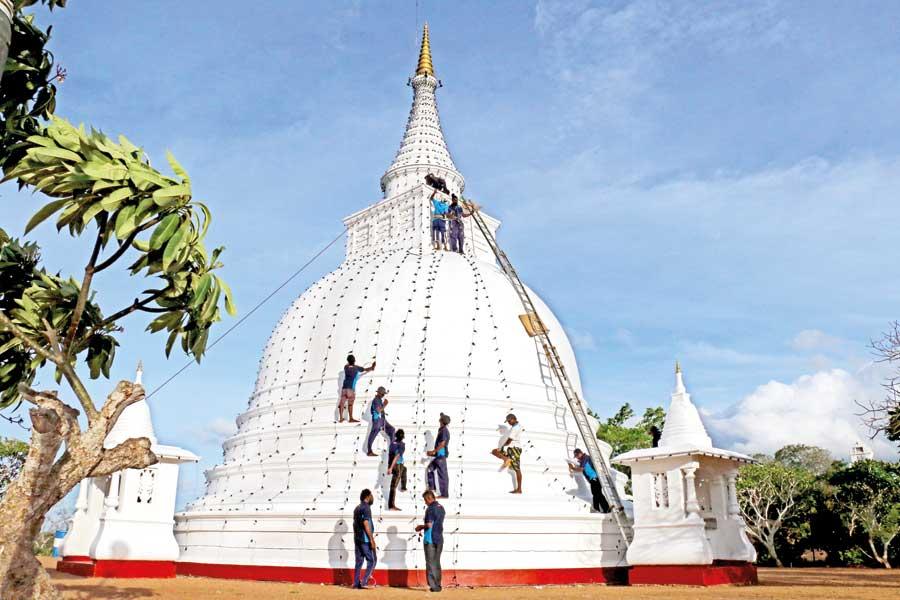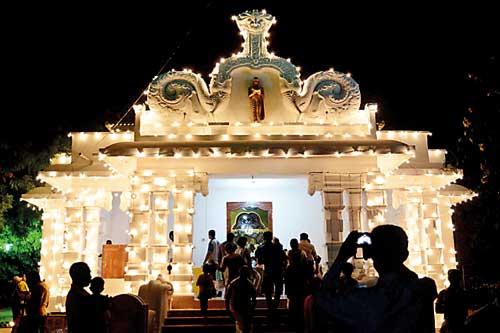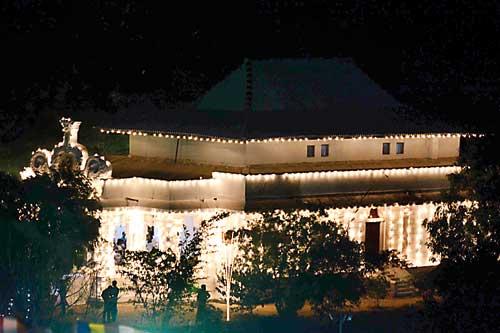Reply To:
Name - Reply Comment

It is the Thanthirimale season of the year. As I pen this, the staff of Wijeya Newspapers is already at the site. They went there a couple of days back lock, stock and barrel, leaving the comfort of their homes and relatively comfortable surrounding with colleagues in office. Some including the management staff have done this without a break for 16 long years. This is their annual commitment and they have carried this forward for the past 16 years with great dedication. At the time this programme commenced, many thought that given the difficulties encountered, it would not continue for a long time. 
In 2004, when the Aloka Pooja concept was first thought of, we had the dreaded LTTE war with all connected problems. Many of our countrymen wondered why we should host such a programme at the border of a war zone. The LTTE war was just across Malwathu Oya, the northern boundary of Thanthirimale. I believe it was the blessings of the Great One that guided the thoughts of the management and the staff. When the staff was directed to look for a suitable place to conduct the Pooja, they were guided by an unknown power within two days to get to Thanthirimale – a location they never realised would be most challenging but historically important. Unknown to most of them, they were venturing into a village known in history as Thivakkabamunugama. This place had also been known as Upatissagama. These names are in BC era after the time of Lord Buddha. The name Thanthirimale came to be with the story developing after King Dutugemunu’s period between 161-137 BC. As the tale goes, Gemunu’s son Saliya was expelled from the palace for having an affair with a commoner, Asokamala. Some of the stories say this couple lived close to Thivakkabamunugama. Ultimately, King Gemunu made up with his son and as a token of affection gifted him and Asokamala a gemstone that resembled a butterfly which was known as Thanthiri. This is the origin of the name Thanthirimale.
But long before King Dutugemunu, during the time of King Devanampiyatissa (250-210 BC), Thanthirimale was famous as Thivakkabamunugama as it welcomed the great Bhikkuni Sanghamitta Theri with the sapling of Sri Maha Bodhi from India. It was King Asoka, the emperor of India, who sent his daughter Ven. Sanghamitta with the sacred Bodhi. When we study the story of Buddhism in Sri Lanka, we cannot forget the great roles played by King Asoka. First, he sent his son Mihindu Maharahathan to preach the religion to King Devanampiyatissa meeting him at Mihintale. Then to make this more meaningful, he sent his daughter with the sacred Bo-tree sapling. When we study these tales and look at what is happening today in  years of AD, we should be happy that India has been our friend for many years.
years of AD, we should be happy that India has been our friend for many years.
- "Many of our countrymen wondered why we should host such a programme at the border of a war zone
- Thanthirimale came into prominence again after the Chola invasions and foreign domination by Western countries"
Thanthirimale came into prominence again after the Chola invasions and foreign domination by Western countries. With the turn of the last century except for persons involved in archaeology, very few people ventured into the area. It was after 1960 that Thanthirimale came to be more recognised. It was Ven. Kudakongaskada Wimlagnana Thera who ventured into this area in 1960. Officials from the Archaeology Department and a few villagers who were involved in Chena cultivation offered him help to clear the area and rehabilitate it. Transport to the area was difficult with a few CTB buses and government vehicles plying to Mahavilachchiya.
Today, the landscape has changed. The Aloka Pooja concept has opened up the area to the world. Travel time that spanned a couple of hours from Anuradhapura has been shortened to less than 45 minutes and commuting has never been easier, thanks to wide open roads. As the Aloka Pooja is held for the sixteenth time this year from June 15 to 17, we should remember the sacred events that took place in this hallowed place, be proud of our history and take all means to preserve it for the future.
Pic by Pradeep Pathirana
